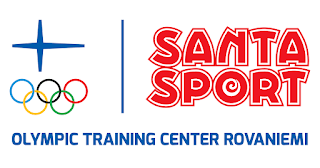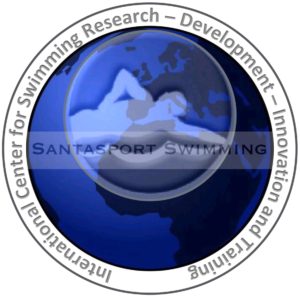Courtesy: Jukka Shemeikka, Head of Aquatics at the Olympic Training Center Rovaniemi, Finland.
As a part of its Research, Development and Innovation (RDI), the Olympic Training Center Rovaniemi is running a competitive swimming development program called ‘Modern Dryland Training’. This arose from the simple objective of creating better solutions for dryland training for swimmers and coaches globally. Along the way, the focus has shifted to a bigger picture of having synergy between dryland training and pool training.
Background
“Challenge your thinking” is our way of sharing the findings of our 4D swimming project. The 4D Swimming project is a part of our research, development and innovation program. 4D Swimming explores the coordination of different strokes in swimming and develops theories of faster performance. In recent years, swimming has taken a big step forward, where swimming technique alone is no longer enough. What is happening with some of the fastest performances in the world right now has nothing to do with technique alone because the moment is so much faster that it is difficult to perform with traditional technique. Many times, these performances are related to using elastic energy from the body, which results in coupling motions.
In addition to some of the high-performance swimmers finding these new ways to swim faster, there are also ways to swim we still haven’t unlocked. For example, in freestyle this means using the maximum number of myofascial slings for maximum amount of elastic energy.
There is no written manual for these performance related references, so we don’t have a name for them. For now, let’s call it Performance Swimming. It is important for the development of the sport that we know how to distinguish between these two ways of developing performance. The technique is learned in the early stages of swimming and in racing swimming, performance swimming is practiced. As our understanding expands, we will certainly see how these two areas also interact.
The theories we develop or the studies we publish do not invalidate previous knowledge, but create a new view of how to move faster in water. So, we invite you to challenge your thinking and create new possibilities to swim faster.
Breaststroke arms
The speed of the breaststroke arm cycle has increased, at least in the fastest performances. To develop the stroke, it is needed to take something away from it. To hold a steady performance throughout the race the swimmer should minimize energy consumption and drag. In this case related to breaststroke, it means minimizing the power output of the arms during performance. We had already started working some years ago to understand how back extension is used to lift the head and upper body into the breathing phase. The idea was to reduce the strain on the hands. The only issue with this was that the swimmer needs to have a good hip support so that his legs don’t sink while doing this. Due to the verticality of the back extension and breathing phase, it releases energy to the rest of the body. This may show as a negative effect when the hands are pressed down, or the hips and legs sink. In the simplest terms, for movement to be successful, it needs to be supported.
Leaning on water is a term we use to describe e.g. the braking movement that might occur when a hand is reaching for the catch phase in freestyle. This can be seen in the hand force measurements. Although this is not a desired quality for freestyle swimming, we realized it would be useful in breaststroke. Using leaning in the breaststroke the hands act as a power intermediary. Instead of using arms or shoulders to perform outsweep, hands just lean into the water during the outsweep with the power coming from the back extension, still maintaining the proper outsweep direction and not pushing down with the hands. It’s a win-win situation. This way the swimmer can make the performance faster and is able to uphold maximum forward speed during the breathing phase. The faster the back extension, the more energy is released into the hands to perform the outsweep.
By changing the angle of the hand, the swimmer is able to steer himself forward and up, maintaining maximum forward speed during the breathing phase. As the body is constantly moving forward, the sweep turns into a movement resembling a short pulling phase at the end of the back extension. It is important that the outsweep and back extension are of equal length so that no pressure is left on the hands that would cause the hands to stop at the beginning or during the insweep phase. After short insweep phase, the recovery phase is started from the upper body, i.e. from the fold of the upper abdomen, continuing it by extending the shoulder joint. In this way, the swimmer can keep his hands relaxed also in the recovery phase, because the actual performance comes from something other than the arms themselves. This allows for fast recovery phase that creates a coupling motion. In this case, the forward movement speed of the body can even be so high that the load on the kick is reduced. In this way, the swimmer sifts from continuous acceleration to upholding the speed, which allows for better performance.
This video introduces the first step to help understand how the power of back extension is distributed to the arms. Leaning on rings while doing a back extension helps to create an understanding of how hands are used as intermediates instead of doing a normal outsweep. To protect the lower back and to have a good hip support, remember to tilt the pelvis backwards before performing the exercise.


Olympic Training Center Rovaniemi is one of the six Olympic Training Center’s in Finland. Together with a diverse network of Universities, sports federations and associations, research institutes and other experts, we are able to offer a wide level of education in multiple fields of sports and well-being as well as in different sports.
Santasport Swimming is a growing International Research, Development and Innovation program for swimming. Today we do research on both learn to swim and high- performance swimming using our previous experience. Through our research work, we are hoping to offer new insights on swimming development.


video not working
Thanks
I agree that the back extension increases leverage but at the same time also increases drag.
Yes, it increases drag if the swimmer has no hip support or the back extension is too slow